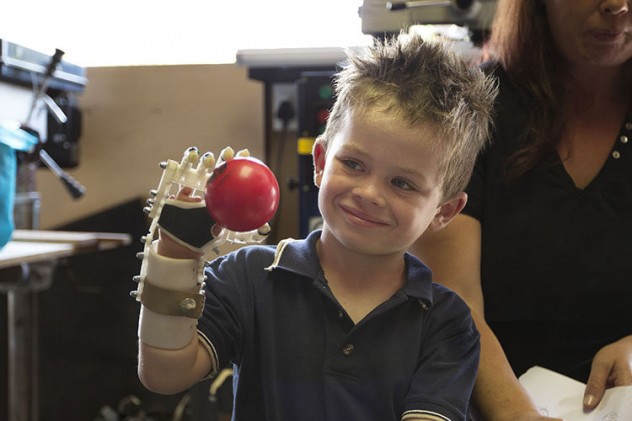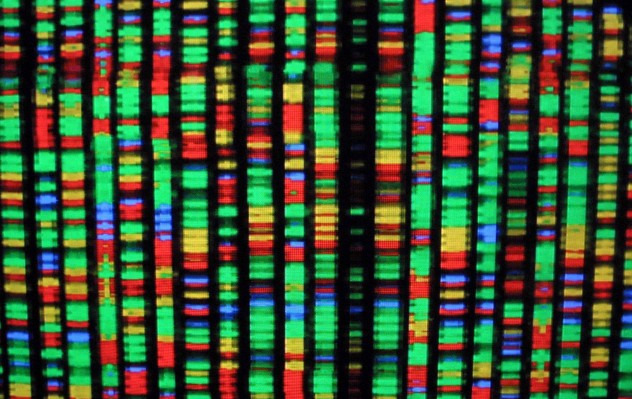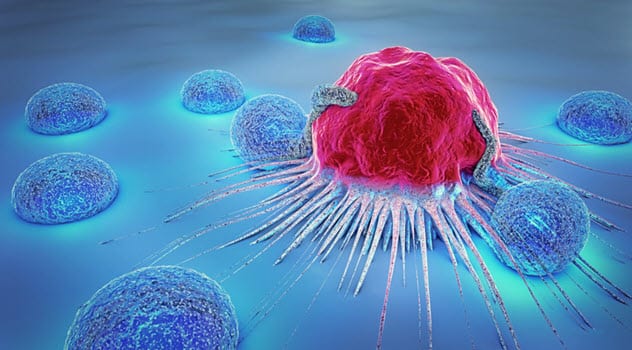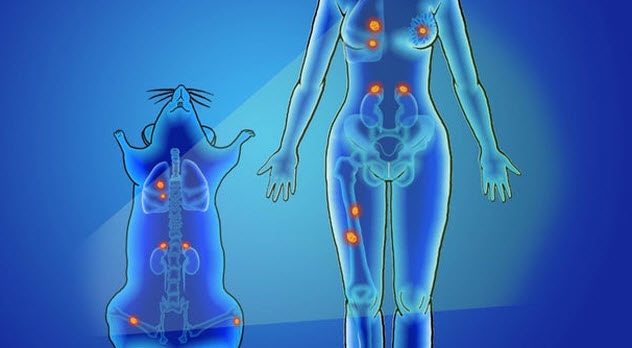 Technology
Technology  Technology
Technology  Humans
Humans 10 Everyday Human Behaviors That Are Actually Survival Instincts
 Animals
Animals 10 Animals That Humiliated and Harmed Historical Leaders
 History
History 10 Most Influential Protests in Modern History
 Creepy
Creepy 10 More Representations of Death from Myth, Legend, and Folktale
 Technology
Technology 10 Scientific Breakthroughs of 2025 That’ll Change Everything
 Our World
Our World 10 Ways Icelandic Culture Makes Other Countries Look Boring
 Misconceptions
Misconceptions 10 Common Misconceptions About the Victorian Era
 Mysteries
Mysteries 10 Strange Unexplained Mysteries of 2025
 Miscellaneous
Miscellaneous 10 of History’s Most Bell-Ringing Finishing Moves
 Technology
Technology Top 10 Everyday Tech Buzzwords That Hide a Darker Past
 Humans
Humans 10 Everyday Human Behaviors That Are Actually Survival Instincts
 Animals
Animals 10 Animals That Humiliated and Harmed Historical Leaders
Who's Behind Listverse?

Jamie Frater
Head Editor
Jamie founded Listverse due to an insatiable desire to share fascinating, obscure, and bizarre facts. He has been a guest speaker on numerous national radio and television stations and is a five time published author.
More About Us History
History 10 Most Influential Protests in Modern History
 Creepy
Creepy 10 More Representations of Death from Myth, Legend, and Folktale
 Technology
Technology 10 Scientific Breakthroughs of 2025 That’ll Change Everything
 Our World
Our World 10 Ways Icelandic Culture Makes Other Countries Look Boring
 Misconceptions
Misconceptions 10 Common Misconceptions About the Victorian Era
 Mysteries
Mysteries 10 Strange Unexplained Mysteries of 2025
 Miscellaneous
Miscellaneous 10 of History’s Most Bell-Ringing Finishing Moves
Top 10 Significant Advancements In Medicine In The 21st Century
Believe it or not, one-fifth of the 21st century is already behind us, and the past 20 years were pretty intense. While there were plenty of social and political changes across the world, one industry that has seen significant advancement is medicine.
The first 20 years of the 21st century have seen advancements in the way we identify, catalog, and treat a plethora of diseases. This list highlights the 10 most significant medical advances made in the first fifth of the 21st century.
10 Prosthetics Have Gone Bionic

The Six Million Doller Man made it seem like bionic implants and prostheses were an impossible future. That show aired in the 1970s, and the future is now! Of course, people aren’t transformed from crippled astronauts into superheroes, but bionic prosthetics have gone from science fiction to reality.
It will be a while before these limbs look and feel like biological appendages. Still, advancements are being made towards that goal. Modern prostheses can function better than past versions. Some even make it possible for the wearer to manipulate them with their minds.
By placing electrodes on various parts of the skull, a person can manipulate their bionic prostheses by thinking. The technology needs some work, but it’s been proven to function with some patients being able to open and close a bionic hand to pick up and manipulate objects.
The technology has gone beyond manipulation to make it possible to “feel” with bionic fingers. Other advancements include bionic lenses that restore vision. Work is being done to create implantable neuroprosthetic devices that can control computers, so expect this technology to improve and advance over the next 20 years.
9 HIV/AIDS Treatment Has Taken The Fight To The Virus

For years, it seemed that HIV was a virus that couldn’t be defeated. When it infected someone, it was only a matter of time before they developed AIDS, which would ultimately claim the patient’s life. For the latter part of the 20th century, that was typically the result of an infection.
There were antiviral medications patients could take, but they were numerous, and each came with side effects. This made it difficult for patients to stay on schedule, and eventually, the virus won out. That began to change in 2006 with the release of Atripla.
The medicine combined three antiretroviral drugs into a single dose, making it much easier and less damaging to take. In 2013, Stribild was released, and it combined four HIV antiretroviral medications into a single dose. Medicines and treatments continued to improve over the first two decades of the 21st century.
In 2017 and 2019, two new medications, Juluce and Dovato, were released, drastically improving treatment options for patients. Those two breakthrough drugs made it possible for every patient with HIV to be on an effective single-dose therapy, helping to reduce the number of HIV patients who develop AIDS while drastically reducing healthcare costs.
8 We Cracked The Human Genome

In 1990, an international scientific research project began the arduous task of cracking the human genome. The idea was to determine the base pairs that make up human DNA. These would then be mapped to better understand the human genome, which would aid in medical research and treatment.
In 2000, the Human Genome Project released a rough draft of the human genome. It was the first time in history that people could read a complete set of human genetic information. Three years later, a final draft was released as the program shut down, having delivered on its promise to map the three billion nucleotides contained in our DNA.
The finished project presented a mosaic of various individuals, and the data derived from the study has been instrumental in furthering our understanding of human genetics. The project made it possible to map an individual human genome easier and relatively inexpensively. This makes it possible to identify disease-causing mutations before they manifest in a patient.
Genomics advancements have furthered cancer research and treatment with the creation of more targeted drugs. Additionally, we now know the genetic basis of nearly 5,000 conditions, which is a significant improvement over the 60 we understood before we cracked the human genome.
7 Advances In Genetic Engineering

Science fiction tells us that genetic engineering results in the creation of monsters. In reality, it offers a means of correcting congenital defects and mutations that result in disease. The most well-known process for accomplishing this is CRISPR, or clustered regularly interspaced short palindromic repeats.
Essentially, CRISPR is a means of targeted editing a living organism’s genes. It can also be used to create agricultural products, genetically modified organisms, and control pests and pathogens. The 2020 Nobel Prize in Chemistry was awarded to Jennifer Doudna and Emmanuelle Charpentier for developing the technique.
The use of CRISPR genomic modification remains controversial, but it has been shown to be effective in various medical applications. Research in biomedicine shows that CRISPR can treat cancer, progeria, sickle cell disease, hemophilia, Huntington’s disease, and many more diseases resulting from a person’s genes.
In 2020, CRISPR was used effectively to treat glioblastoma and metastatic ovarian cancer. Further research and development will likely yield more advancements in treating various diseases, pathogens, and more. Research is being conducted worldwide to advance CRISPR into various therapies, suggesting it will become commonplace in the future.
6 Heart Disease Is No Longer A Death Sentence

Before the turn of the century, doctors could do very little for a patient who suffered a heart attack. Treatment typically consisted of providing a drip of morphine and lidocaine, which was believed to prevent irregular heartbeats. Most patients didn’t recover, but these days, deaths from heart disease have dropped by 40%.
A lot of that is due to the development of new medicines, including Lipitor, Mevacor, Crestor, and Simvastatin, which all work to slow the progression of atherosclerosis (plaque and fatty material buildup in the arteries). With those drugs, fewer patients are getting to the point of having a heart attack.
Still, heart attacks do occur, but when they do, they are treated very differently than they were in the past. Today, it’s all about speed. Once a patient arrives at the hospital, a clot can be destroyed with drugs. A genetically engineered tissue plasminogen activator (tPA) can bust up a clot, restoring blood flow.
Patients who require surgery are treated differently from the past, resulting in far fewer deaths from a cardiac infarction. The improvement stems from a 1998/2000 goal set by the American Heart Association, which wanted to reduce cardiac deaths by 25% by 2010. In 2008, the goal was achieved, and by 2020, a 40% reduction was reached.
5 Stem Cell Research & Application Made Leaps & Bounds

The use of stem cells in research isn’t anything new, as the technology to derive them from embryos was developed in the early 1980s. Since then, technology has advanced significantly, and medical research and treatment applications have hit the ground running in the 21st century.
Stem divide to form “daughter cells,” which can then turn into new stem cells or become any other specialized cell in the body. Under the right laboratory conditions (or in the body), stem cells can replace damaged cells. Potentially, they can be used to grow new organs.
The applications of the latter are promising, as any organs grown from a patient’s own cells wouldn’t require a lifetime of anti-rejection medication. Furthermore, the organ would theoretically be accepted without a problem, reducing the risk of transplantation, which is already a complex procedure.
Other applications include treating against disease and genetic conditions. In one study, manipulated bone marrow cells were transplanted into two seven-year-old boys. This stopped the progress of a fatal brain disease called adrenoleukodystrophy. Research into other applications is promising, suggesting stem cell therapy is truly the future of medicine.
4 Targeted Cancer Therapies Are Improving Survival Rates

For years, the primary method to treat a patient with cancer was through chemotherapy and radiation therapy. While these often worked, they did so by attacking cancer cells and healthy cells, which presents its own set of problems. Over the past decade, new techniques have been developed that make it possible to treat cancer more effectively.
Targeted therapies make it possible to eliminate many of the dangerous side effects of chemo and radiation therapies by going after the cancer cells without the danger of harming healthy cells. These targeted therapies work in several ways, but for the most part, they do the following:
-They identify and kill cancer cells directly.
-They interfere with the spread of cancerous cells, blocking the ones responsible for tumor growth.
The past decade has seen FDA approval for more than 25 new medicines that have shown an effectiveness in treating cancer patients through targeted therapy. The drugs are either small-molecule or monoclonal antibodies, which target specific cancer cells’ functions of how they divide, grow, and spread.
The technology behind targeted therapy is still relatively new, so advances are continuing around the world. It doesn’t mean we’ve beaten cancer, but we have advanced in the fight against one of humanity’s most insidious enemies.
3 Nanomedicine Left Science-Fiction Behind And Became A Reality

Sci-Fi has long been the domain of nanotechnology, and for a good reason. Programming machines smaller than cells is fantastical in nature, but that doesn’t mean it’s impossible. To be clear, that’s not what modern nanomedicine is, but the impact of what it has become suggests the future may be devoid of side effects.
Current nanomedicine is centered mainly around drug delivery. Instead of programming impossibly tiny robots, nanomedicine works by employing nanoparticles that are specifically engineered to target specific cells in targeted drug delivery. In short, it takes medicine directly to the affected cells, which reduces the total amount of drugs required.
Additionally, nanoparticles avoid healthy cells, which limits side effects. As the technology develops, it could reduce side effects in targeted therapies, improving drug effectiveness and survival rates.
Nanotechnology-based drugs are already on the market. Drugs like Abraxane, Onivyde, Rapamune, and others have improved anti-rejection and cancer treatments. Research is ongoing, and further advances in the treatment of HIV and cancer are looking to be the way of the future.
2 It Is Now Possible To Print Body Parts

Fabricating a body part from raw materials has long been the subject of science fiction, but that’s not the case any longer. Since 3D printing technology has advanced over the past two decades, new methods in creating implantable body parts have emerged. The current technology makes it possible to combine cell types with polymers to create living, functional tissues.
The technology behind this is still in the early phases of development, and it isn’t widely available at this time. Still, studies have made significant leaps and bounds via the technology. By 2020, researchers had successfully printed and implanted bionic eyes, hearts, skin, bionic ears, elastic bones, ovaries, and antibacterial teeth.
Because it’s still in the research and development phase, these items and organs have been successfully implanted into mice and other animals. Still, the technology is incredibly promising. As it develops, it should be possible to utilize a specialized 3D printer to recreate organs that can be implanted into patients.
Bioprinting and biotechnology companies are working hard to recreate everything from blood vessels to ears and whatever is needed in the future. It may eventually be possible to print a person’s heart to replace a damaged one without having to wait for months or even years on a transplant list.
1 RNA Vaccines Left The Lab And Took The Fight To The Virus

On their own, the vaccines developed to fight against COVID-19 are a fantastic medical achievement. Simply getting them through all the necessary red tape is noteworthy. Still, there’s far more going on behind the scenes than the average person knows because the technology that went into creating the vaccines represents a significant advancement.
The vaccines were made as quickly as they were, in part, because the research was already underway to develop the technology of RNA vaccines. Traditional vaccines work by placing an inactive version of the whole virus into the body. The immune system responds by learning how to attack and deal with it.
Another way to fight a virus is to deliver the nucleic acid that encodes the protein. The person’s immune system reacts by making the necessary protein to fight the virus. RNA vaccinations inject the nucleic acid that codes for the proteins that the cells need to make, delivering the “instructions” the body needs to fight off the virus . . . in other words, the vaccine changes the host’s DNA.
RNA vaccine technology is relatively new, and the COVID-19 vaccines are the first to make it out of the testing phase and into patients’ bodies. Thus far, it’s appeared successful, but it’s only the beginning. Further research and advancements in the technology could battle against viruses that have been difficult in the past, making RNA vaccines one of the most important medical advancements of the 21st century.








